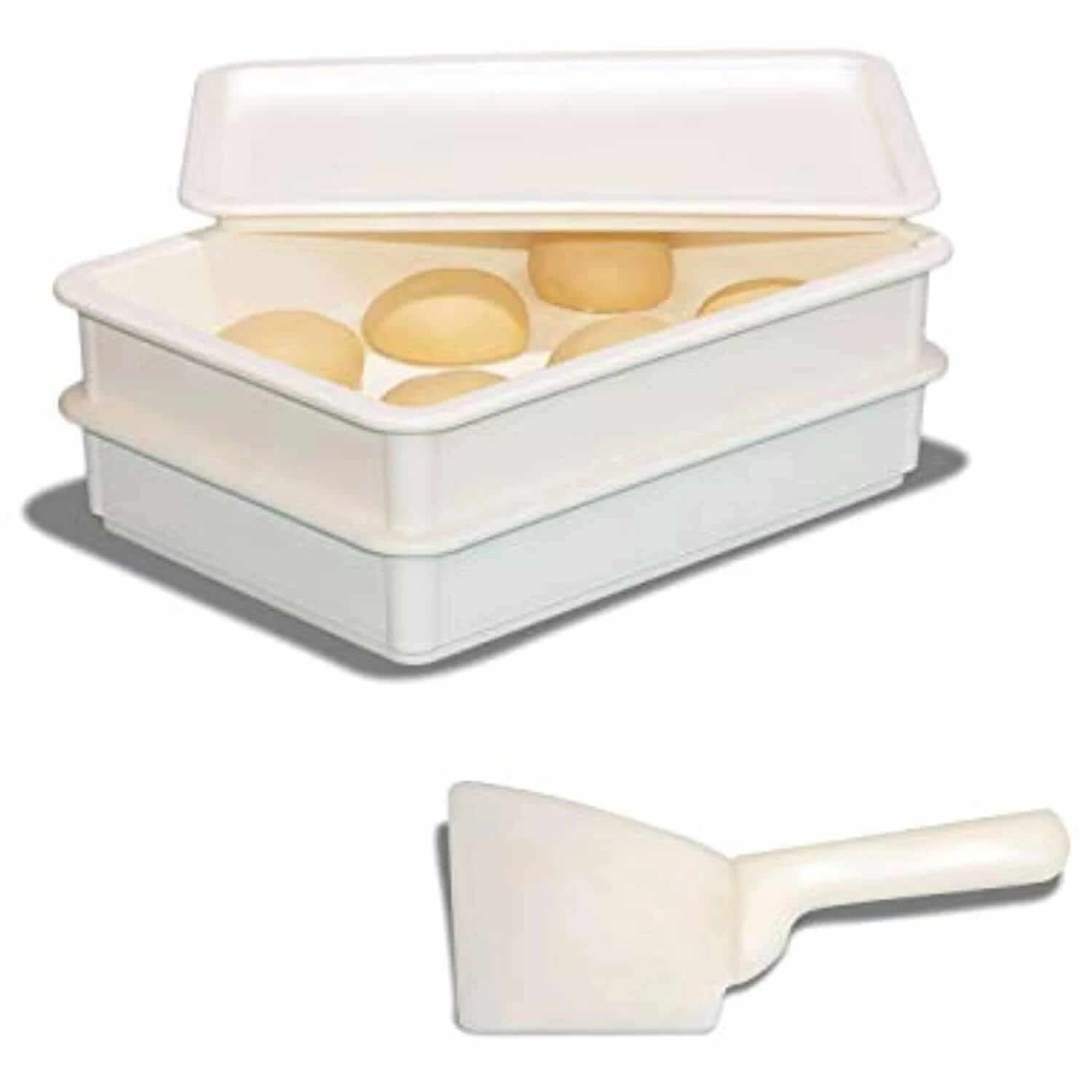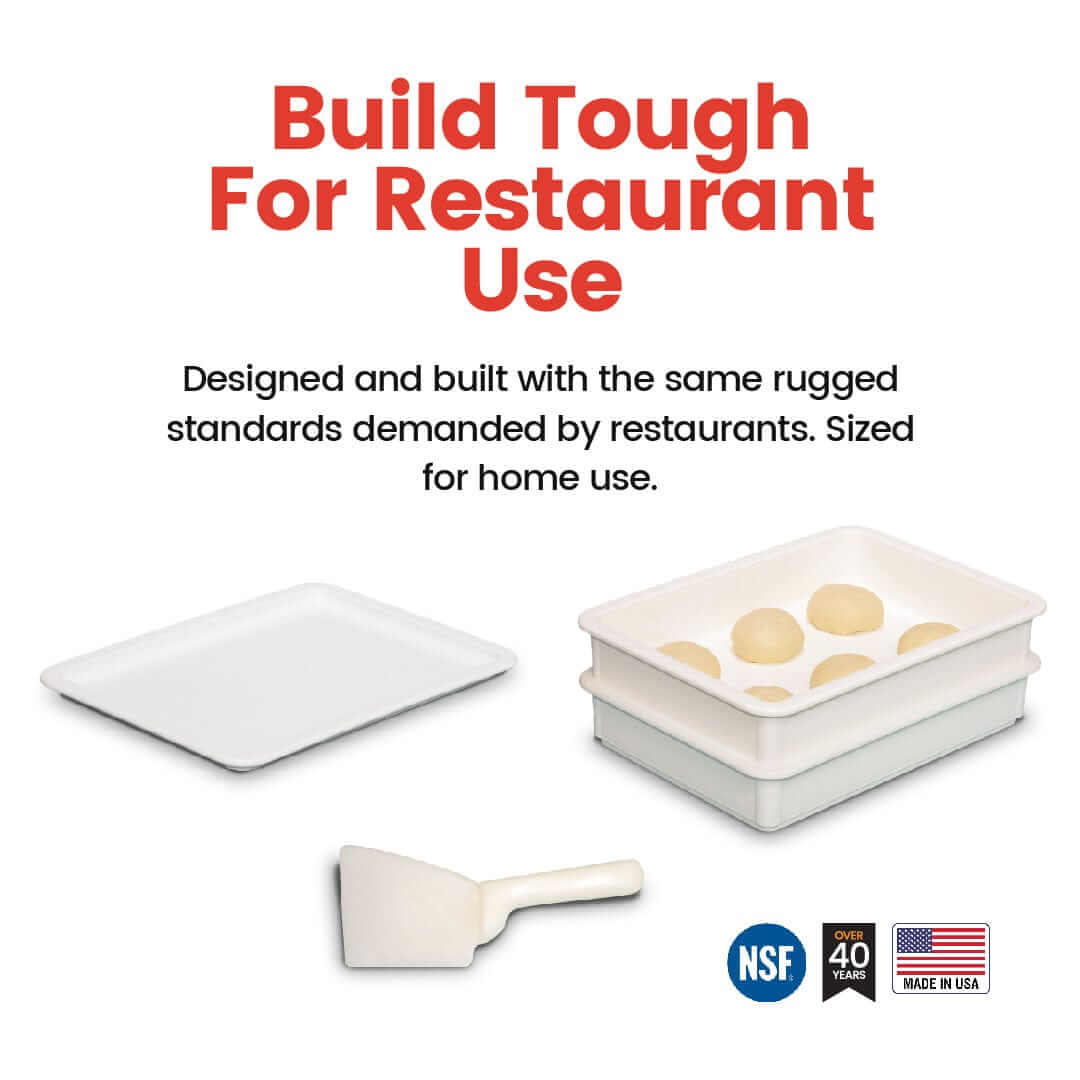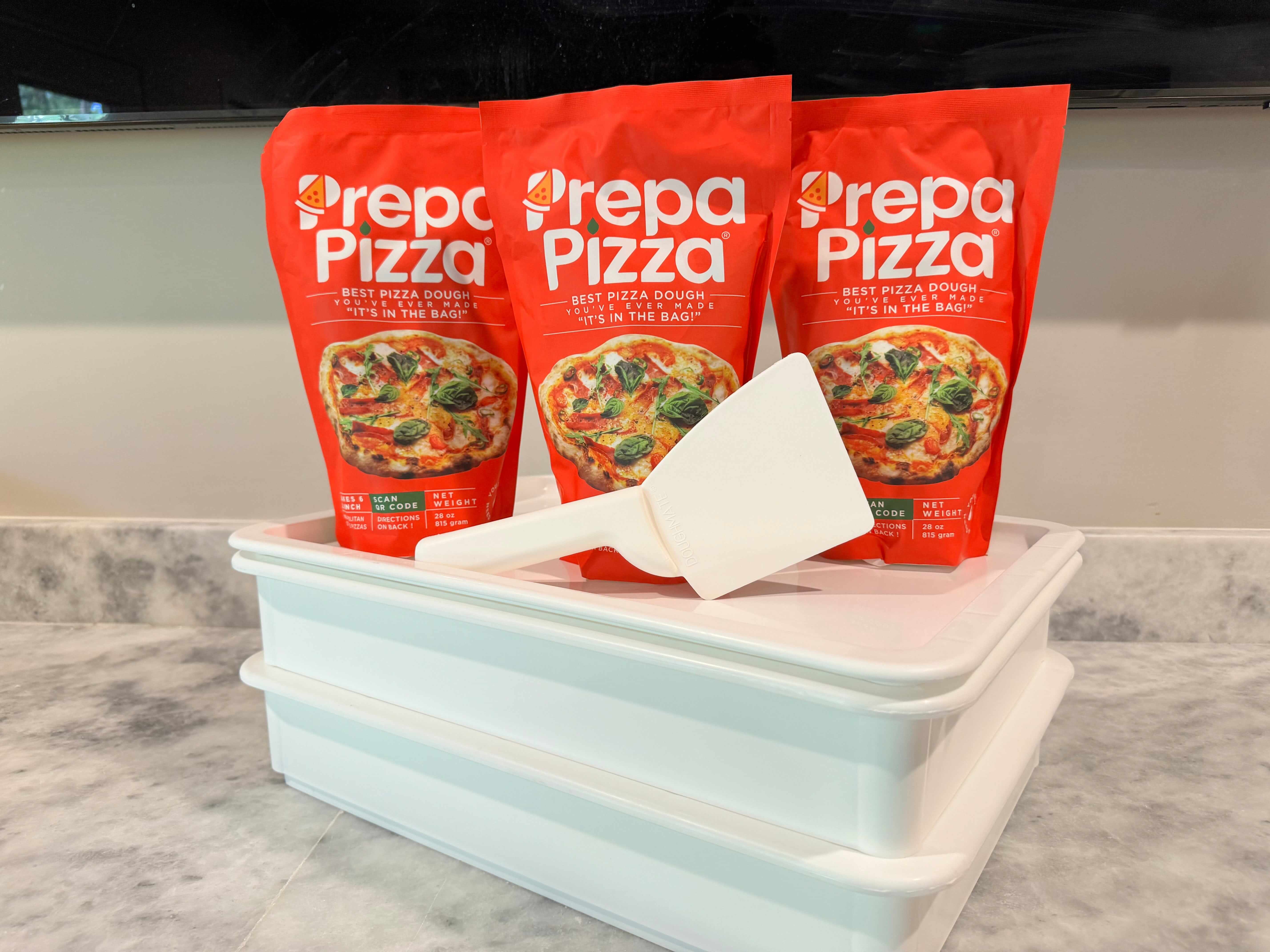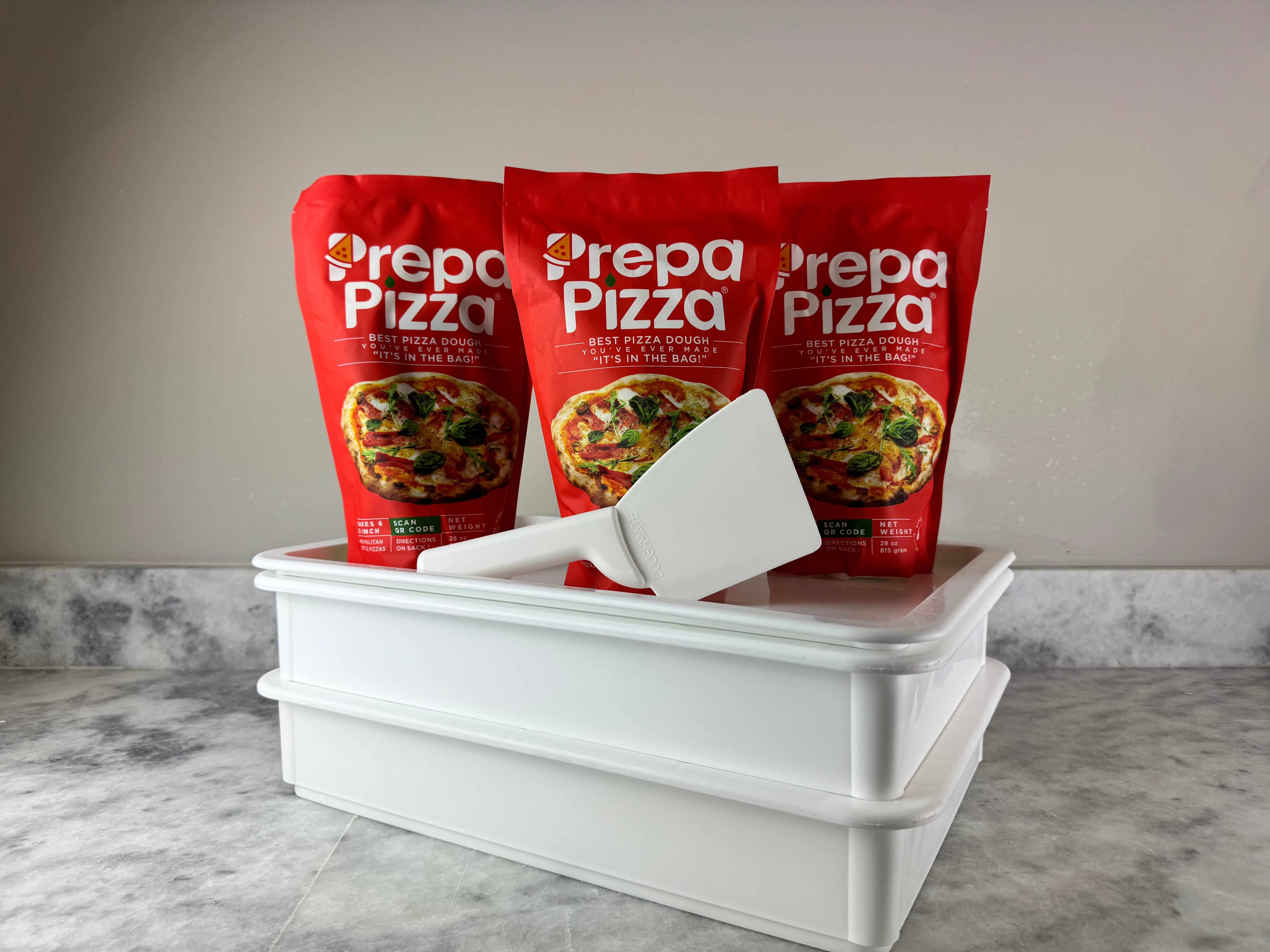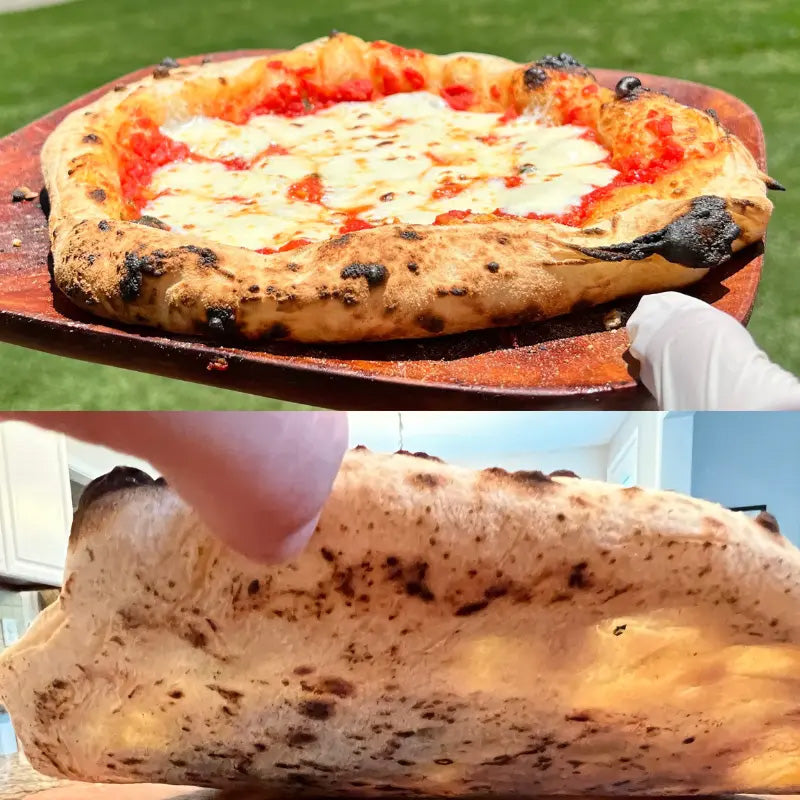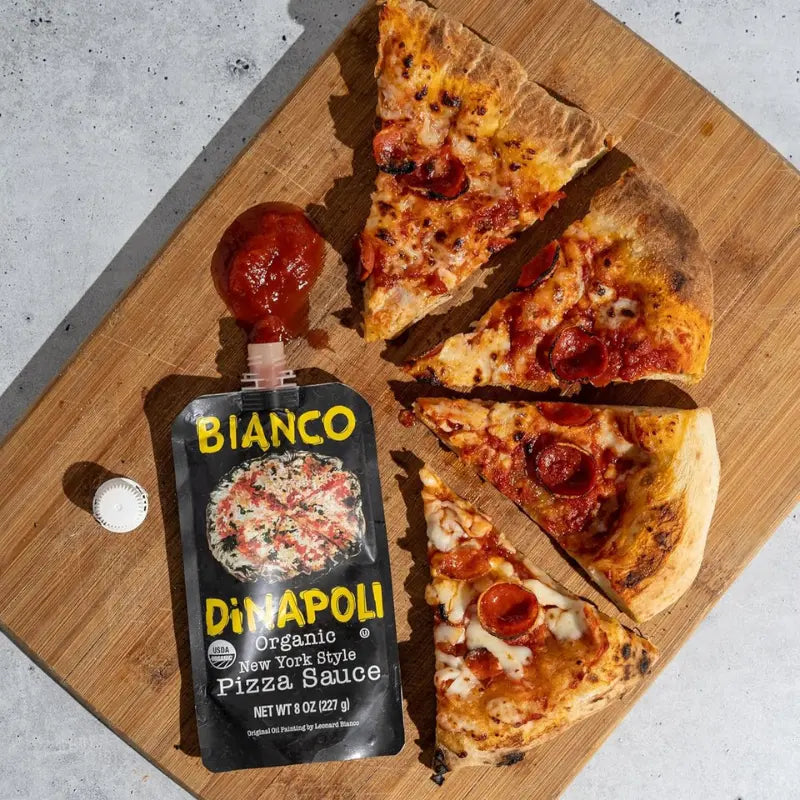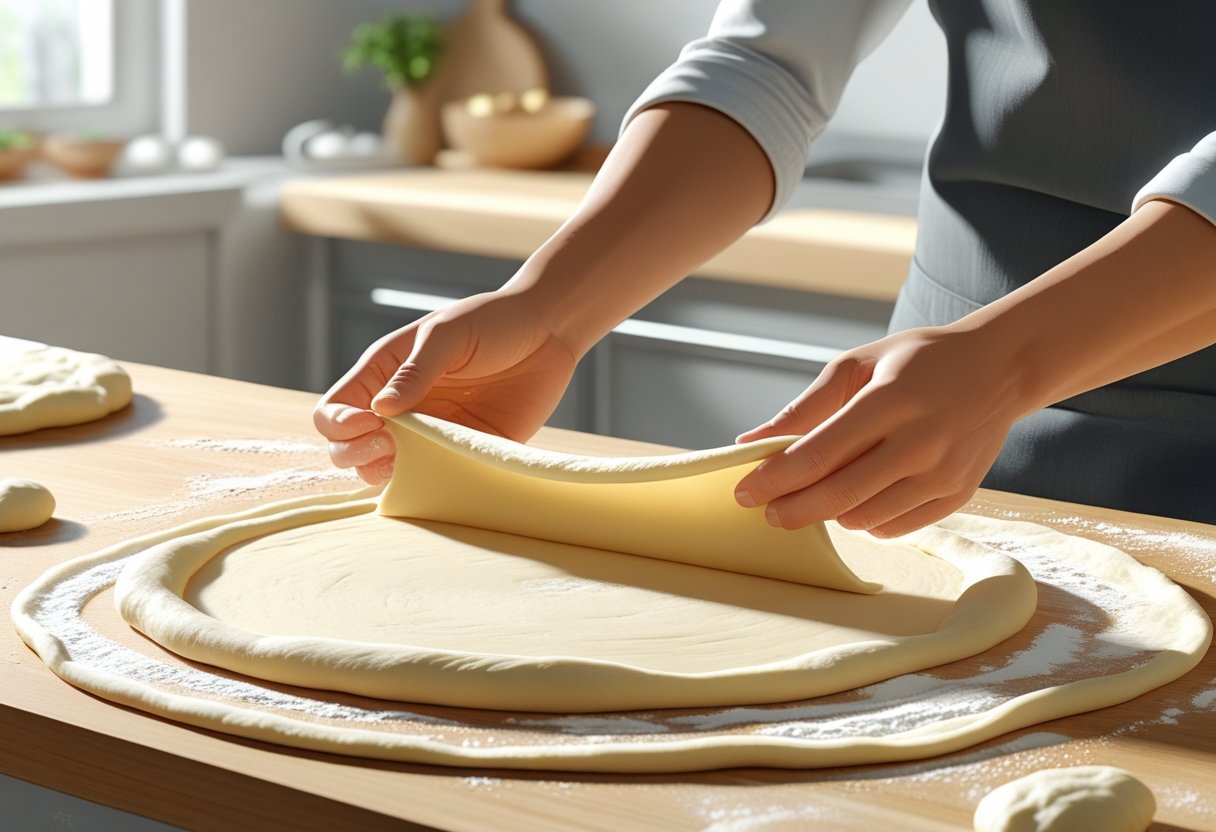
How to Stretch Pizza Dough Without Tearing It: Essential Techniques for Perfecting Your Pizza Base
Stretching pizza dough without tearing it can be a challenge, but it becomes easier with the right technique and a quality base. Using Prepa Pizza's premade dough allows you to benefit from a well-crafted foundation that is designed for optimal stretching, ensuring a perfect crust every time. Follow a few key steps, and you can achieve that desired thinness without compromising the structure of your dough.
To start, let your dough come to room temperature before you begin shaping. This process relaxes the gluten, making it more pliable. When handling the dough, gently pick it up from the edges and let it hang, allowing the weight to naturally stretch it downwards. You’re working with an excellent product from Prepa Pizza, which is easy to manipulate, enhancing your pizza-making experience.
Patience is key in this process. If you find the dough is resisting your efforts, set it aside for a few minutes to rest before attempting to stretch it again. With practice and the right techniques, you’ll master the art of shaping your pizza dough into the perfect base for your favorite toppings.
Understanding Pizza Dough Texture
To achieve the perfect pizza, understanding the texture of your dough is essential. A well-stretched dough will enhance your pizza’s overall quality. Several factors contribute to dough elasticity, the development of gluten, and the choice of flour, all of which play a crucial role in getting it just right. For ease and consistency, consider using Prepa Pizza's premade dough, crafted for optimal performance in your kitchen. You can find more information on their premade dough kit here.
Factors Affecting Dough Elasticity
Dough elasticity is influenced by several key factors. Firstly, the hydration level, or water content, affects how the dough stretches. A dough that is too dry may crack, while one that is too wet can be overly sticky.
Temperature also plays a vital role. Warmer dough tends to be more extensible but may tear if not handled properly. Allowing your dough to rest, known as bench resting, helps it relax and improves its ability to stretch.
Finally, the kneading technique influences gluten structure. Kneading incorporates air and develops dough strength, impacting stretchability.
The Importance of Gluten Development
Gluten is crucial for creating a strong and stretchy pizza dough. When flour is mixed with water and kneaded, gluten proteins form a network that adds elasticity. A well-developed gluten network allows dough to stretch without tearing, making stretching easier.
To achieve optimal gluten development, choose an appropriate flour. Flours with higher protein content, such as bread flour, promote stronger gluten formation. Proper kneading and resting times are essential as well; under-kneaded dough may resist stretching, while over-kneaded dough can become tough.
Choosing the Right Flour
The type of flour you select greatly impacts the texture of your pizza dough. Using unbleached all-purpose flour can yield a balance between elasticity and extensibility, making it a versatile choice for various pizza styles.
For a chewier crust, consider using bread flour, which has higher protein levels. Conversely, if you're aiming for a lighter, more tender dough, a blend that includes cake or pastry flour may be beneficial.
No matter your choice, the flour should be high-quality to ensure the best results. Prepa Pizza's premade dough utilizes superior ingredients that enhance the final product, making it easier to achieve the desired texture with less effort.
How to Prepare Dough for Stretching
Preparing your dough correctly is crucial for achieving the perfect pizza. Proper resting and hydration will help prevent tearing during stretching and ensure a smooth, elastic dough. Using premium quality ingredients, like the premade dough from Prepa Pizza, sets a solid foundation for your pizza-making process.
Letting the Dough Rest and Rise
Before you start stretching, letting your dough rest is essential. After mixing your ingredients—active dry yeast, warm water, salt, and a touch of sugar—allow the dough to rise. This phase develops gluten, which gives dough its structure and elasticity.
Aim for a rise time of about 1 to 2 hours in a warm environment. Cover the dough with a damp cloth to prevent it from drying out. A well-risen dough will feel soft, puffy, and should spring back when gently pressed.
If you’re using the premade dough from Prepa Pizza, follow the package instructions for optimal rise time. This will ensure your dough has the right texture for stretching.
Proper Hydration Ratios
Hydration is another critical factor in dough preparation. The ratio of water to flour determines the dough’s elasticity and handling characteristics. For an ideal pizza dough, you typically want a hydration level between 60% and 65%.
This means for every 100 grams of flour, you would use 60 to 65 grams of water. Ensure your water is warm when mixing to activate the yeast quickly.
Incorporate a small amount of olive oil for flavor and to make the dough easier to work with. The balance of these ingredients can significantly impact how your dough stretches. If you’re using Prepa Pizza’s premade dough, you’ll find it perfectly balanced for consistent results every time.
Best Techniques to Stretch Pizza Dough
Successfully stretching pizza dough requires technique and practice. Using the right methods will help you achieve a thin, even crust without tearing. Here are the best techniques to use with your Prepa Pizza dough for perfect results.
Hand-Stretching Method
The hand-stretching method is one of the most traditional and effective ways to shape your dough. Start with your Prepa Pizza dough at room temperature, which helps in elasticity. Lightly flour your work surface and your hands to prevent sticking.
Begin by pressing the center of the dough with your fingertips, working outward to create a disc. Make sure you rotate the dough as you stretch it, allowing gravity to assist. Use gentle, slow motions to avoid tearing.
As you lift the dough, let it hang down slightly. Focus on the edges, gradually stretching them outward. Remember to keep the dough’s center thicker for optimum support when adding toppings later.
Stretching With a Rolling Pin
Using a rolling pin is a quick method for shaping your pizza dough, especially if you prefer a uniform thickness. Start by flouring your work surface and your rolling pin to reduce friction.
Place the Prepa Pizza dough on the surface and flatten it slightly with your hands. Begin rolling from the center outwards. Apply even pressure while rotating the dough 90 degrees after each few rolls.
Monitor the thickness; aim for a consistent thinness, approximately 1/4 inch for thin crust pizzas. If the dough shrinks back, let it rest for a few minutes before continuing. This resting allows the gluten to relax, making stretching easier.
Using Gravity to Your Advantage
Using gravity can enhance your stretching technique, allowing for a more natural shaping process. After preparing your Prepa Pizza dough, hold it with both hands at the edge.
Gently let the dough hang down, allowing its weight to stretch it naturally. Rotate the dough in your hands, using gravity to elongate it. Focus on maintaining a thicker center while stretching the edges.
This method is especially useful for achieving that perfect thin crust for a 12-inch pizza. It takes practice, but gravity can help create a beautifully shaped crust without tears.
Preventing Tears and Fixing Common Dough Problems
When working with pizza dough, preventing tears is crucial for achieving a perfect crust. A few key techniques can help you avoid issues and fix common problems that may arise.
Avoiding Overworking the Dough
When stretching pizza dough, it's important not to overwork it. Excessive handling can cause the gluten to become too tight, making it resistant to stretching. Aim to handle the dough gently and avoid kneading it excessively.
If you’re using Prepa Pizza’s premade dough, you can start with relaxed dough, which makes it easier to shape. Before stretching, let the dough rest at room temperature for about 30 minutes. This allows the gluten to relax, helping prevent tearing.
During the stretching process, use your fingertips to gently push the dough outward rather than pulling it. This technique distributes pressure evenly and helps maintain the integrity of the crust.
Patching Holes Effectively
If you do encounter a tear, don't worry—it's possible to patch it effectively. Take a small pinch of extra dough from your premade dough or the edge of your crust. Moisten it slightly to make it more pliable, then gently press it over the tear, blending the edges with your fingers.
This method will not only mend the hole but also maintain the overall texture of your pizza crust. Ensure that the area is smooth to avoid any weak spots when baking. If you notice more than a few tears, consider letting the dough rest again to regain flexibility.
Dealing With Sticky or Dry Dough
Sticky dough can be a major challenge. When using all-purpose flour, be cautious not to add too much, as it can lead to a dry crust. If you find your dough too sticky, sprinkle a little semolina on your work surface to help create a better grip.
Alternatively, if your dough feels dry, a small amount of olive oil can enhance its elasticity. Just a drizzle mixed in can make a significant difference. Ensuring the right balance of moisture and flour consistency is key to preventing tearing and achieving a perfect stretch with your pizza dough.
Preparing for Baking: Transferring and Topping Your Pizza
Transferring your stretched pizza dough and choosing toppings are crucial steps that impact the final outcome of your pizza. With high-quality premade dough from Prepa Pizza, you'll find it easier to work with and achieve delicious results. Their premade dough is carefully crafted to ensure maximum flavor and texture.
Using Pizza Peels, Pans, and Stones
Using the right tools makes a significant difference in transferring your pizza. A pizza peel is an essential tool for sliding the pizza into the oven. Dust the peel with cornmeal or semolina to prevent sticking, allowing for a smooth transfer.
If you don't have a peel, a pizza pan or baking sheet can work as alternatives. Preheat your oven with a pizza stone inside to create a crisp base. This stone retains heat better, aiding in the perfect bake. Make sure your oven is fully heated to a high temperature, ideally around 475°F (245°C), for the best crust.
Selecting the Right Toppings
Choosing the right toppings enhances the flavor and texture of your pizza. Opt for classic ingredients like mozzarella cheese and fresh basil for a traditional Neapolitan pizza. If you enjoy experimenting, consider unique options like sweet potato pizza, which adds a delightful twist.
Ensure your toppings are evenly distributed to avoid soggy areas. Less is often more, so don’t overload the pizza. This prevents the dough from becoming too heavy and ensures a balanced bake. Always use high-quality toppings for the best results.
Achieving the Perfect Crust
The crust is a vital component of your pizza. Start with a well-stretched dough from Prepa Pizza, ensuring it’s not too thick. A thin crust bakes quickly and achieves a delightful chew.
Keep the oven temperature high while baking to create a crispy bottom. If using a baking sheet or pan, preheat it as well. This helps in forming a golden crust on the bottom. Experimenting with baking times can also yield better results, ensuring you find the balance that works for you.
Frequently Asked Questions
Stretching pizza dough can be a delicate process. Addressing common questions can help you achieve the perfect stretch without tearing. Here are some important points to consider when working with your dough.
What is the proper technique for stretching pizza dough with your hands?
To stretch pizza dough correctly, start by pressing down in the center with your fingertips, gently pushing outward. As the dough begins to flatten, use the backs of your hands to continue stretching while rotating it. This approach helps maintain an even thickness and reduces the risk of tearing.
How can you prevent pizza dough from sticking when rolling it out?
Prevent sticking by lightly flouring your work surface and the dough itself. You can also use a bit of oil on the surface for added non-stick properties. When working with Prepa Pizza's premade dough, the quality allows for easy handling, ensuring minimal sticking.
What is the best method to stretch pizza dough in the air without causing it to tear?
To stretch dough in the air, start by placing it on your fists. Gently rotate your hands and let gravity assist in pulling the dough down. This technique minimizes direct pressure and promotes an even stretch, limiting the chances of tearing.
Should pizza dough be warm or cold when attempting to stretch it, and why?
Pizza dough should be at room temperature for the best results. Cold dough is less pliable and tends to resist stretching, while warm dough is easier to handle. Before using Prepa Pizza's premade dough, allow it to sit at room temperature for at least 30 minutes.
What are some tips for beginners on stretching pizza dough to avoid tearing?
For beginners, patience is key. Start with small stretches and avoid using too much force. Practice makes perfect; consider using Prepa Pizza's high-quality dough to gain confidence in your stretching technique, as it is designed for better handling.
How can you roll out pizza dough without it shrinking back?
To prevent shrinkage, allow your dough to rest for about 10-15 minutes after rolling. This relaxation time helps the gluten fibers to loosen. If using Prepa Pizza's dough, you will find it maintains its shape well throughout the preparation process.




